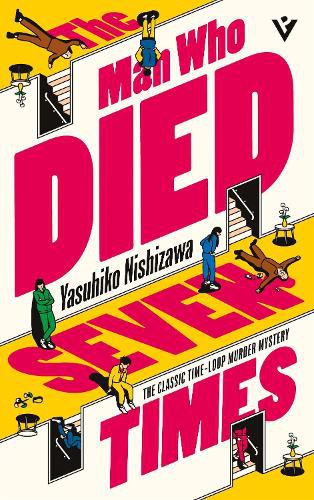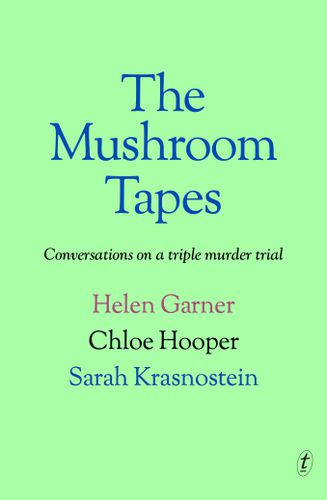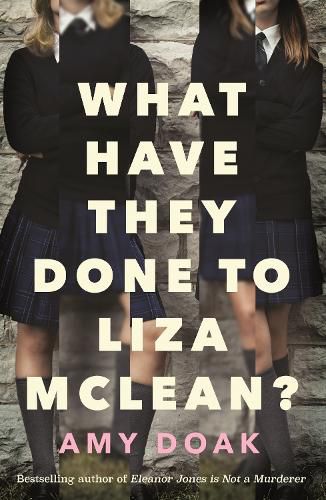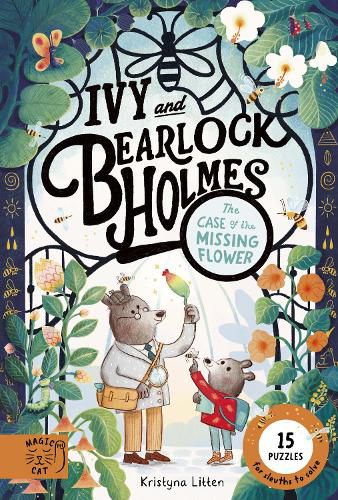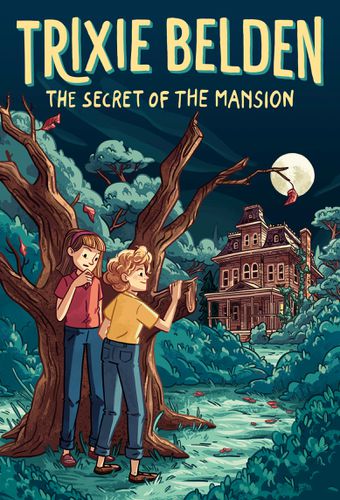Explore our books of the month for November!
Each of the below titles has been read and recommended by our booksellers before being selected as our book of the month for its category.
Fiction Book of the Month
The Transformations
Andrew Pippos
I have such a strong memory of reading an advance copy of Andrew Pippos’s debut novel, Lucky’s, in the middle of the difficult year that was 2020. It picked me up by the bootstraps and reminded me during those rough days that it is books like this that make me love my job. That brilliant, warm, epic piece of writing went on to win The Readings New Australian Fiction Prize in 2021, and was shortlisted for the Miles Franklin Award of the same year, and was embraced by our judges, staff, and customers alike. We have all been waiting to see what Pippos does next, and here it is: The Transformations. Friends, this is a truly superb second novel which cements Pippos’s reputation as one of our most exciting chroniclers of the Australian experience and psyche and all its foibles, a storyteller of the highest order. I have fallen for The Transformations in a big way: it’s that good.
The novel is set in and around the newsroom of a fictional daily newspaper, The National, at a time of rapid change in the print media industry during the 2010s. George Desoulis is a subeditor in his mid-30s. He keeps to himself, admires his colleagues, believes in his work and the labour of the journalist’s calling. A late-night encounter with a colleague, Cassandra, marks a turning point in his life, as he finds an unexpected but intense connection with this woman who has children and a marriage and an agreed set of parameters with her husband around non-monogamy. George knows this is tricky – could it ever work? Is it wise to try to find out? – but he’s drawn, seemingly beyond his control, curious to see what happens. This is progress though. George has been alone, closed off; we soon learn his youth and innocence was cut short at an early age, by grief, by abuse suffered at the hands of a trusted teacher, and then by a relationship in his late teens and twenties that resulted in a daughter, who is now a teenager and lives with her mother. Might this relationship hold the promise of George’s becoming?
The characters in The Transformations are so clearly imagined, and the attachment I developed for them is one of the reasons I couldn’t put this book down: they’re flawed and lovable and affecting in ways that are familiar and emotionally charged, while Pippos’s particular skill for capturing the nuance of Australia’s migrant experience through the generations is again on show here. If the human condition is marked by the commonality and inevitability of change – one kind of transformation to which the book’s title alludes – then Pippos has found a way to describe and illuminate how this is felt by his characters. It’s a wonderful feat, arresting these moments on the page, as time moves on: the transformational affect, the feelings between the before and the after find their language in this book. The past, in its recurrence through memory and the traces it leaves in the mind and the body, is never too far from the surface, influencing thoughts, feelings, becoming the reason for change itself; the intimate and the monumental, the personal and the cultural, always in tension, and always on the way to somewhere or something else. There are some brilliant descriptions of the workings of the newsroom and print media too that I won’t soon forget, now experiences largely consigned to history I’m sure, but here is a record of how the end days of print media played out, amid the everyday lives of the people who worked in it and for it. And at the end of it all – as it is in life and as it was in Lucky’s too – is love. One of the great books and reading highlights of my 2025: I hope you’ll fall for it too.
Reviewed by Alison Huber.
Crime Book of the Month
The Man Who Died Seven Times
Yasuhiko Nishizawa, translated by Jesse Kirkwood
First published in Japan in 1995, The Man Who Died Seven Times is a genre-defying crime thriller of murder, greed, and fractured family loyalties.
Hisataro has been born with a curse. At any point, and beyond his control, Hisataro will be stuck in a time loop, forced to relive the same day nine times. As if that wasn’t trouble enough, Hisataro is also the youngest member of the wealthy Fuchigami family – a family constantly bickering and competing with each other as their patriarch, Hisataro’s grandfather Reijiro Fuchigami, remains flippant about choosing an heir to inherit all his wealth.
So when Reijiro is found murdered on New Year’s Day, one day after announcing he has chosen his heir, Hisataro sees his curse as a blessing. He must solve his grandfather’s murder in nine days before the loop ends, or he may never discover which of his family members is a murderer.
Groundhog Day meets Succession in this inventive and unsettling mystery, at once darkly humorous and uncomfortably plausible. Many novels explore the strength of family bonds against any adversity, but when wills and inheritance are mentioned, nothing can split a family apart more quickly. Beneath the novel’s twists and revelations lies a sobering inquiry into the nature of loyalty and the corruptive influence of wealth, asking just how thick blood really is when it comes up against money, and how far one can drive the other, even to the point of death.
With an eccentric cast of characters, shocking secrets and backstabbings, and an unexpectedly clever ending, Yasuhiko Nishizawa’s whodunnit is one you’ll wish had been translated sooner. It’s a sharply constructed puzzle-box of morality and greed, where every revelation deepens the absurdity of human ambition. Clever, cruel, and darkly funny, it’s a reminder that time may repeat itself, but our worst impulses rarely change.
Reviewed by Aurelia Orr.
Nonfiction Book of the Month
The Mushroom Tapes: Conversations on a Triple Murder Trial
Helen Garner, Chloe Hooper & Sarah Krasnostein
Clear your diaries, because The Mushroom Tapes is categorically a must-read, diary-clearing kind of book: the hotly anticipated literary engagement with the infamous and internationally compelling Erin Patterson triple murder trial that we’ve all been waiting for, and undoubtedly the nonfiction book of the season. Written by three of the best writers in the business – Helen Garner, Chloe Hooper, Sarah Krasnostein – who joined forces and interests to follow the trial together, and create something they could not have done alone, this book is, as we who know these writers’ works individually have hoped, greater than the sum of its parts, their collaboration supercharging their insights, concerns, expertise.
But enough of the hype, and first, a confession: I’m not a true crime kind of gal. I have listened to no podcasts (of any kind), and was only moderately interested in the ‘mushroom trial’ (as it has come to be known), as part of the background news feed that is part of one’s daily life: I was not trawling the internet for clues of my own, hypothesising, or otherwise obsessed with this case, as interesting and unusual as it is. If you are one of these types, you’ll know much of the factual material that the book conveys, but, like the authors, you might not have been quite sure what to do with all the pieces of this very public puzzle, and were looking for a way through the evidence that builds up and leads, inevitably, to Patterson’s guilty verdict, seeking the answer to the pressing question, ‘why?’. Here, Team Mushroom shows you a way.
But for those of us without this depth of detail, there is enough here to get us up to speed (and to leave us suitably aghast), and learn about the distinct personalities both inside and outside the courtroom and the terrain of its Gippsland location, but then the focus becomes the words of our guides, each unique, honest, and unmistakable in their personalities. They cover all the questions of ethics and purpose we might all wish were answered about this crime and all true crime writing.
There is nothing gawkish or gratuitous about this book (or, as Garner fears at one point, they’re not ‘perving’). Its register is inquisitive, reflexive, curious, cautious, a cultural inquisition with psychological heft, always mindful of the lives affected and lost following the terrible event of that infamous beef wellington lunch, and interrogative of the collective interest in the gloom.
I couldn’t stop reading this book, told as it is in a series of transcripts of two- and three-way conversations, sometimes in the car or over the phone or over lunch during breaks in the court proceedings, which had been destined for a podcast of its own that didn’t eventuate, but instead we – lucky readers, all – can gulp down, right to its final beautiful paragraph, after which I audibly sighed, ‘wow’.
Reviewed by Alison Huber.
Young Adult Book of the Month
What Have They Done to Liza McLean?
Amy Doak
The latest novel by the author of the Eleanor Jones murder-mystery series is set in an elite boarding school that oozes tradition and old money. When scholarship kids Meg and Liza arrive at prestigious Douglas College, it’s quite a culture shock. Although Meg’s a straight-A student, her younger sister is a wild child and Meg finds herself retrieving her sister from the principal’s office far too often. There she meets Benedict Hargreaves the Fourth (aka Benny), who comes from a long lineage of Douglas alumni and is the only student allowed to reside off campus. Opposites immediately attract, despite both harbouring secrets.
When Meg’s wayward sister suddenly becomes studious and robotic after a wild night out, Meg is suspicious. She enlists the help of Benny, who’s highly adept at hacking the school computer system. When the two of them find the school gardener dead, they must untangle the threads between these mysteries.
Written in dual voices with alternating chapters by Meg and Benny, and with fascinating secondary characters, including Mack, Benny’s bestie who stylishly dresses all his friends, and Kitty De Vries, the bad-tempered heiress who leads Liza astray, this is a highly entertaining murder mystery that combines the elite boarding school trope with a slow-burn romance. Those who love crime mysteries and romance aged 12+ will devour this highly addictive story and be left wanting more. Meg and Benny are a delightful crime-busting duo and I hope this won’t be the last we’ll hear from them.
Reviewed by Angela Crocombe.
Picture Book of the Month
Sundays Under the Lemon Tree
Julia Busuttil Nishimura, illustrated by Myo Yim
What a heartwarming picture book! With bright and fun illustrations that capture the joy of life’s simple pleasures, Sundays Under the Lemon Tree brings us a story about family and food. Every Sunday, a family comes together, eating scrumptious home-cooked delights under the large lemon tree in their backyard. One Sunday, a young child gets to help collect seawater to make fresh ricotta and take part in making her grandma’s apple cake. Peering through the door of the oven to watch over the cake as it bakes, the smells of cinnamon, sugar and golden-brown apples waft out of the pages, bringing to life the simple pleasure of a freshly baked cake.
Reading this story brought back my own memories of taking part in la raccolta delle olive (the olive harvest) and learning some of my own family recipes. Excitingly, flicking to the very back of the book you will find Julia Busuttil Nishimura’s own recipe for the lemon, apple and ricotta cake made throughout the book – the cherry on top of such a sweet story. For ages 4+.
Reviewed by Lili Reus-Smit.
Kids Book of the Month
Ivy and Bearlock Holmes: The Case of the Missing Flower
Kristyna Litten
In the Richard Scarry-esque town of Bearona, Ivy and her grandpa, a retired detective, find themselves with a mystery to solve when a rare Agave Bearona flower goes missing from the botanic gardens just as it is set to bloom for the first time in 100 years. Their investigation sends them across the map of Bearona to lots of interesting locations. They encounter a botanist, a brass band, an archaeologist, and a bear who is a beekeeper, which makes sense if you think about it!
There are 15 different puzzles throughout, including mazes, codes, search-and-finds, and matching tasks so readers can help solve the mystery. Simple information about flowers, pollination and honey-making is also woven into the story.
Mystery puzzle books are very popular at the moment, and while the grown-ups get stuck into Strange Pictures and Murdle, the lovely full-colour illustrations, funny details and fascinating facts in this book will delight younger sleuths, and most importantly, keep them guessing till the end! Lots of fun for ages 5+.
Reviewed by Kim Gruschow.
Please note: stock has been delayed and is expected to arrive early December.
Kids Classic of the Month
Trixie Belden: The Secret of the Mansion
Julie Campbell
Trixie Belden is the OG – she’s smart, overflowing with personality, and always poking her nose into trouble. When her older brothers go away to camp, Trixie is sure that she’s in for a long and dreary summer. But a new best friend and the mystery of a dying man’s fortune promise to perk things right up.
Trixie Belden: The Secret of the Mansion is the first in the re-release of the series by Julie Campbell. Unchanged since their first printing, this classic series is right on time for the younger fans of the cosy-crime wave. There’s something wholesome about Trixie – the sprawling farm where she lives, her unencumbered friendship with her two brothers, Brian and Mark, and the occasional intrusion from her overly curious younger brother, Bobby. But in addition to these nostalgic values, there’s a feistiness to Trixie that captured me as a young reader and I know will still capture young readers today. Trixie Belden is a troublesome tomboy with a huge heart, and these clever mysteries will have readers begging for more. For ages 8+.
Reviewed by Bec Kavanagh.



